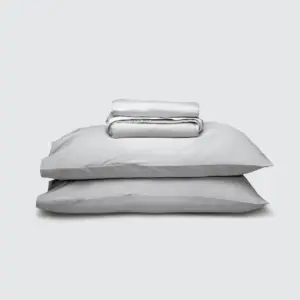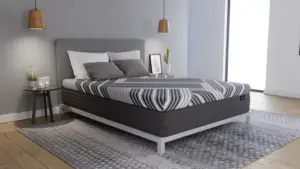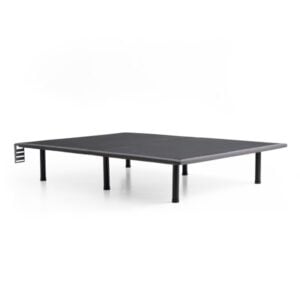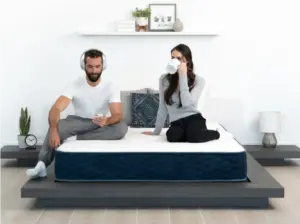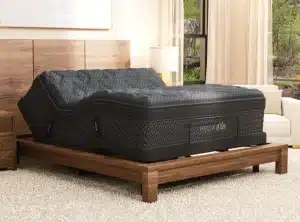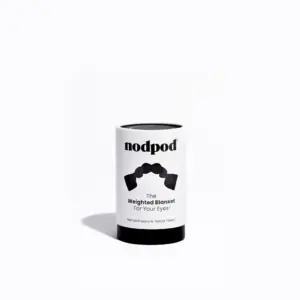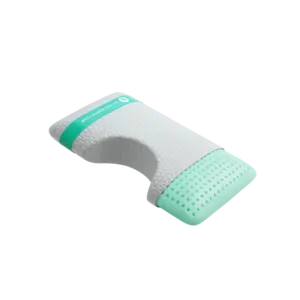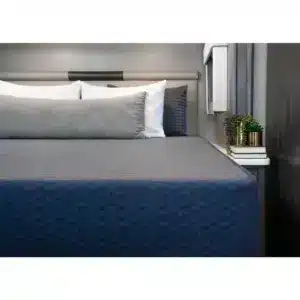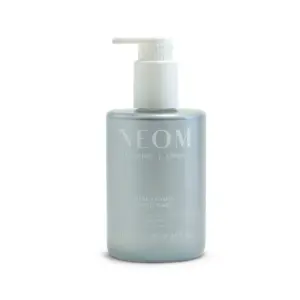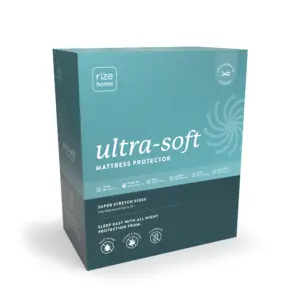What is Virtual Reality and Augmented Reality?
Virtual reality (VR) is a computer-generated simulation of a three-dimensional environment that can be interacted with and explored by users. VR typically requires specialized hardware, such as a VR headset and controllers, to immerse users in a realistic and responsive digital world. The headset tracks the user’s head movements, adjusting the view accordingly, while controllers often track hand movements, allowing for more natural interactions with the virtual environment. VR technology aims to create a sense of presence, making users feel as if they are truly inside the virtual world. This is achieved through various aspects, including visual, auditory, and sometimes haptic feedback (touch sensations). Virtual reality has a wide range of applications, including but not limited to:- Gaming: VR gaming offers immersive and interactive experiences that traditional gaming platforms cannot match, allowing players to become fully engaged in their virtual surroundings.
- Education and training: VR can be used to simulate real-world scenarios for educational purposes, providing students and professionals with safe and controlled environments to learn and practice new skills.
- Healthcare: VR has been employed in various healthcare applications, including pain management, exposure therapy for phobias and anxiety disorders, and rehabilitation exercises for patients recovering from injuries.
- Entertainment: VR offers new possibilities for storytelling and immersive experiences in movies, music, and art.
- Social interaction: Virtual reality platforms enable users to connect and interact with others in shared virtual spaces, fostering social connections and collaboration.
The Growing Popularity of VR
virtual reality (VR) has been steadily growing in popularity over the past few years. Since the introduction of consumer-grade VR headsets like the Oculus Rift, HTC Vive, and PlayStation VR, the technology has become more accessible and affordable for a wider audience. The growing interest in VR is driven by several factors:- Improved hardware and technology: VR headsets have become more comfortable, lighter, and offer better resolution and refresh rates, providing a more immersive and enjoyable experience.
- Increased content variety: As the VR industry matures, there is a growing range of content available, including games, educational experiences, virtual tours, and social platforms. This diverse range of applications attracts different user segments and further drives the popularity of VR.
- Lower costs: Over time, the cost of VR hardware has decreased, making it more affordable for a wider audience. Additionally, standalone headsets like the Oculus Quest have removed the need for an expensive gaming PC, further lowering the barrier to entry.
- Industry adoption: Many industries, such as education, healthcare, automotive, and real estate, have started to adopt VR for training, simulations, and other applications, which boosts the technology’s popularity and visibility.
- Social experiences: VR platforms like VRChat, Rec Room, and Facebook Horizon enable users to socialize, attend virtual events, and collaborate in shared virtual spaces, making VR more appealing to people seeking social connections.
Can You Simulate Feel with Virtual Reality?
Virtual reality is already making progress in simulating the sense of touch, also known as haptic feedback. Haptic technology uses vibrations, force feedback, or other physical sensations to provide users with tactile information in the virtual environment. While current haptic systems are relatively basic, researchers and developers are continually working on more advanced solutions to improve the simulation of touch in VR. Some current and emerging haptic technologies include:- Haptic gloves: These gloves have sensors and actuators built into them, allowing users to “feel” virtual objects and receive feedback when they interact with them.
- Haptic suits: These full-body suits incorporate sensors and actuators throughout, providing sensations of touch, pressure, and temperature across the user’s body. This can help simulate environmental factors, impacts, or other physical interactions.
- Ultrahaptic feedback: This technology uses focused ultrasound waves to create sensations of touch on the user’s skin without any direct physical contact. By carefully controlling the intensity and frequency of the waves, developers can simulate various tactile sensations.
- Haptic displays: These are touch-sensitive screens that provide tactile feedback when users interact with them, offering a more immersive and intuitive user interface.

How To Use Virtual Reality to Find the Best Mattress
Using virtual reality to find a mattress is not a common application, but it’s an interesting idea. If you want to use VR technology for this purpose, you could consider the following steps:- Research mattress brands: First, research various mattress brands and identify the ones that interest you. Look for those that offer VR showrooms or 3D models of their products. Some mattress companies may provide 3D models that can be imported into VR environments.
- VR headset and platform: Make sure you have a compatible VR headset and access to a platform that supports virtual showrooms, such as Oculus Rift, HTC Vive, or PlayStation VR.
- Visit virtual showrooms: Some mattress brands or retailers might have a virtual showroom that you can explore in VR. This will enable you to view their products in 3D and get a better idea of their size, design, and features.
- Import 3D models: If you can find 3D models of the mattresses you’re interested in, import them into a VR environment. This will allow you to visualize the mattresses in a 3D space and examine their features up close.
- Create a virtual bedroom: If you have access to a VR app that allows you to create custom environments, you can build a virtual bedroom to test the mattress models you’ve imported. This can help you visualize how the mattress will look and fit in your room.
- Seek reviews and additional information: While VR can provide a helpful visualization, it’s still important to research user reviews and product specifications for the mattresses you’re interested in. This will help you make a more informed decision.
One of the most basic parts of the mattress purchase process is choosing the right size. If you already have a queen mattress, and you plan to stick with the same size, then this is easy. However, if you’re buying a different size than your current mattress, or if you’re buying a mattress for a room that didn’t previously have a bed, then picking the right size can be harder. To make matters worse, there are a number of closely related sizes, such as twin and twin XL, or king and california king, and it can be difficult to know which variation will be the best fit for you and your space. After spending lots of time researching your dream mattress, the last thing you would want is to pick the wrong size and have to go through a painful return.
A new free iPhone app called Bedder (https://www.triple.io/bedder) aims to solve this problem by using augmented reality (AR) to display virtual mattresses in all six standard sizes in your room before you buy them. Each mattress appears at its actual size, so you can, for instance, view a queen mattress (60″ x 80″) side by side with a king mattress (76″ x 80″) to see which one will fit best in your bedroom.
We tested the app and found the accuracy to be surprisingly good — each mattress appeared at its correct size to within an inch. The app is also pretty straightforward to use, although it might take a bit of practice if this is your first time using AR. In order to tell if a mattress was a good fit, we found that after placing it into the room we needed to walk around it and make sure it wasn’t poking through any of the walls in our room.
Virtual Reality Mattress Reviews
Creating mattress reviews using virtual reality would involve simulating the experience of trying out mattresses in a virtual environment, allowing users to gain a better understanding of the product’s feel and features without needing to visit a physical store. Here are some steps to create a virtual reality mattress review experience:- 3D modeling: Create accurate and detailed 3D models of the mattresses being reviewed, including their size, shape, texture, and materials. This is crucial for providing users with a realistic representation of the product.
- Haptic feedback: Incorporate haptic technology to simulate the sensation of touch, pressure, and texture when users interact with the virtual mattress. This can be achieved using haptic gloves, suits, or other devices that can provide tactile feedback. Although current haptic technology may not perfectly replicate the feeling of a mattress, it can still provide valuable information about firmness and support.
- Audio descriptions and guidance: Include voiceovers or virtual assistants to guide users through the mattress review process, offering information about the materials, construction, firmness levels, and other relevant factors. This can help users make informed decisions based on their personal preferences and needs.
- Customizable avatars: Allow users to create customizable avatars that represent their body shape, weight, and sleep positions. This will enable the virtual reality system to provide personalized feedback about how each mattress might feel and perform for individual users.
- Comparative analysis: Design the virtual environment to allow users to easily switch between different mattress models, allowing for direct comparison of their features and feel.
- User feedback and ratings: Encourage users to provide feedback and ratings on their virtual mattress testing experience. This can help other users make more informed decisions and contribute to a community-driven review platform.
- Integration with e-commerce: Link the virtual reality review platform to online retailers, so users can easily purchase the mattress they like after trying it out in the virtual environment.

All in all, Bedder is a simple and easy to use app to help you choose the best-fit mattress, which is especially useful if you don’t have a tape measure handy. If you’re going to spend months of research and $1000+ on your next mattress, you might as well spend 2 minutes using Bedder to make sure you’ve chosen the right size. Bedder is free to download on the App Store: https://itunes.apple.


